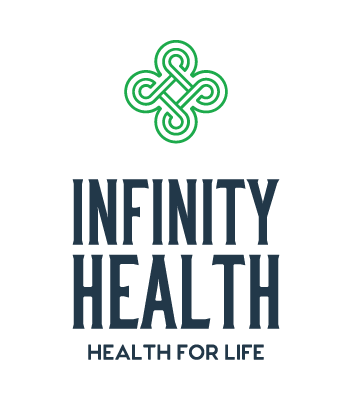Physiotherapy is the practice of restoring functionality and movement after illness or injury. To understand the full scope of Physiotherapy, it is important to consider the Physiotherapist’s involvement with other medical professionals. As a wellness team, they work to improve numerous conditions including:
- Neurological problems (such as MS or Parkinson’s);
- Neuromusculoskeletal problems (such as arthritis or sports injuries);
- Cardiovascular problems (such as rehabilitation after heart attack) and;
- Respiratory problems (such as Asthma or Cystic Fibrosis)
In these particular situations, the goals for physiotherapy treatment programs vary. Typically, they include providing easier breathing, better movement, living pain-reduced or pain-free, preventing injury, increasing mobility and increasing strength and flexibility.
There are Many Treatments Options
Physiotherapy is a diverse and malleable practice, offering solutions to many conditions. At Infinity Health, we offer a number of treatment techniques. Depending on the type or severity of your condition, we could prescribe any number of the following programs.
Deep Tissue Massage:
Deep tissue massage involves applying firm pressure and slow strokes. This is designed to reach deeper layers of muscle and fascia (the connective tissue surrounding muscles). It relieves chronic aches and pain and works to release contracted areas such as a stiff neck or back, tight leg muscles or sore shoulders.
Trigger Point Therapy
Trigger points, or muscle “knots”, are sensitive spots in soft tissue. They are quite common and very painful. They tend to be a major factor in back and neck pain.
Mysofascial Tissue Release
Myofascial Release is a safe and very effective hands-on technique. It involves applying gentle, sustained pressure to connective tissue. This eliminates pain and restores motion.
Ultrasound Therapy
Ultrasound therapy is the use of sound waves to treat medical issues. Because sound waves are above the range of human hearing, they are to used treat injuries such as muscle sprains and strains, tendinitis, bursitis and runner’s knee.
Dry Needling
Myofascial trigger point dry needling, uses a “dry” needle (one without medication or injection). The needle is inserted through the skin into areas of the muscle. The primary aim is to relieve muscle pain and cramping. This technique results in the deepest tissue release, allowing for improvements in movement and pain.
Joint Mobilization
Joint mobilization is the precise use of skilled, graded forces to move a joint in a desired direction. It is a specific technique for the capsule of the joint itself. Gliding of the joint is used to improve motion and normalize joint function and reduce pain.

